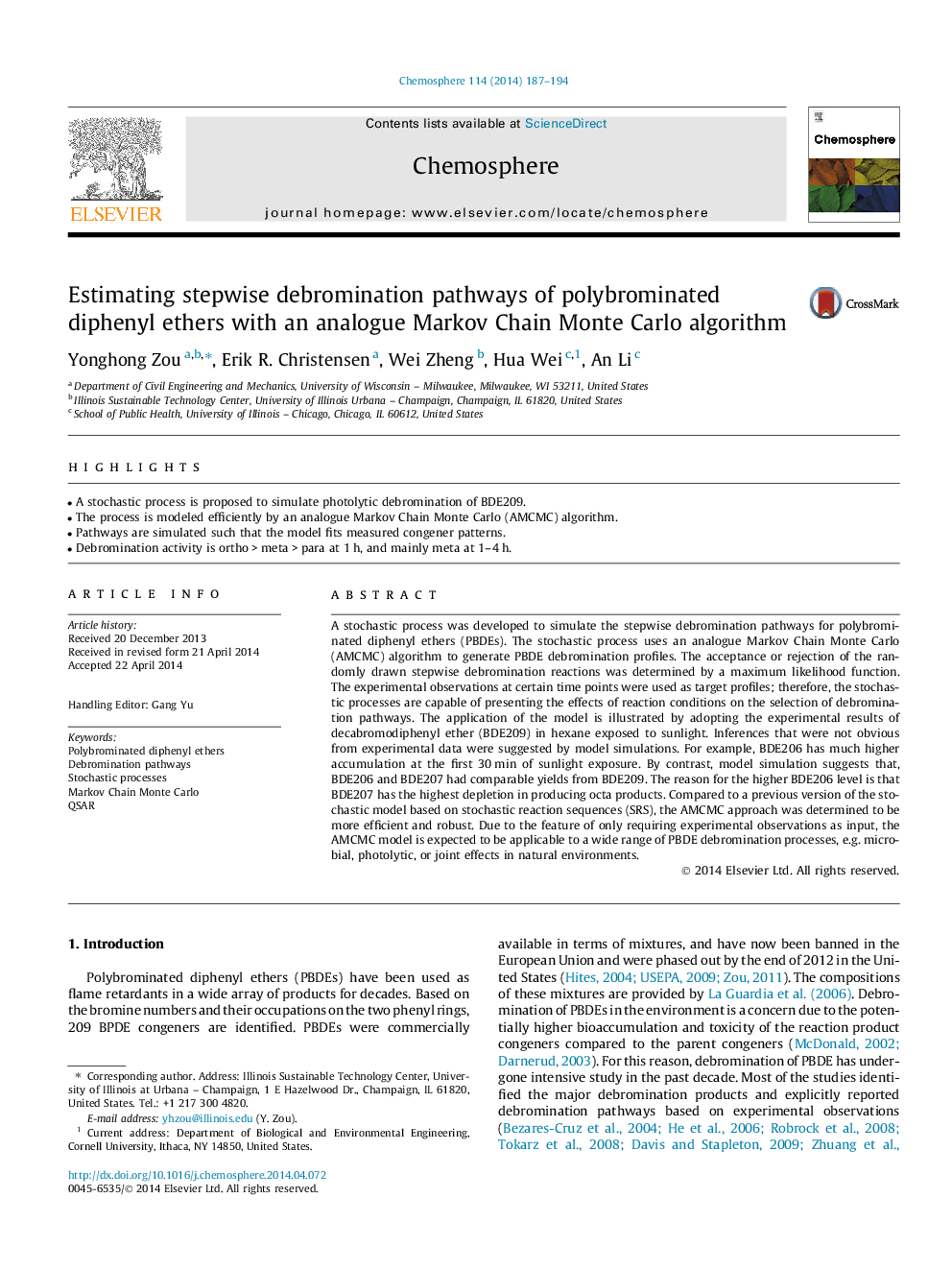| Article ID | Journal | Published Year | Pages | File Type |
|---|---|---|---|---|
| 6308948 | Chemosphere | 2014 | 8 Pages |
Abstract
A stochastic process was developed to simulate the stepwise debromination pathways for polybrominated diphenyl ethers (PBDEs). The stochastic process uses an analogue Markov Chain Monte Carlo (AMCMC) algorithm to generate PBDE debromination profiles. The acceptance or rejection of the randomly drawn stepwise debromination reactions was determined by a maximum likelihood function. The experimental observations at certain time points were used as target profiles; therefore, the stochastic processes are capable of presenting the effects of reaction conditions on the selection of debromination pathways. The application of the model is illustrated by adopting the experimental results of decabromodiphenyl ether (BDE209) in hexane exposed to sunlight. Inferences that were not obvious from experimental data were suggested by model simulations. For example, BDE206 has much higher accumulation at the first 30Â min of sunlight exposure. By contrast, model simulation suggests that, BDE206 and BDE207 had comparable yields from BDE209. The reason for the higher BDE206 level is that BDE207 has the highest depletion in producing octa products. Compared to a previous version of the stochastic model based on stochastic reaction sequences (SRS), the AMCMC approach was determined to be more efficient and robust. Due to the feature of only requiring experimental observations as input, the AMCMC model is expected to be applicable to a wide range of PBDE debromination processes, e.g. microbial, photolytic, or joint effects in natural environments.
Keywords
Related Topics
Life Sciences
Environmental Science
Environmental Chemistry
Authors
Yonghong Zou, Erik R. Christensen, Wei Zheng, Hua Wei, An Li,
